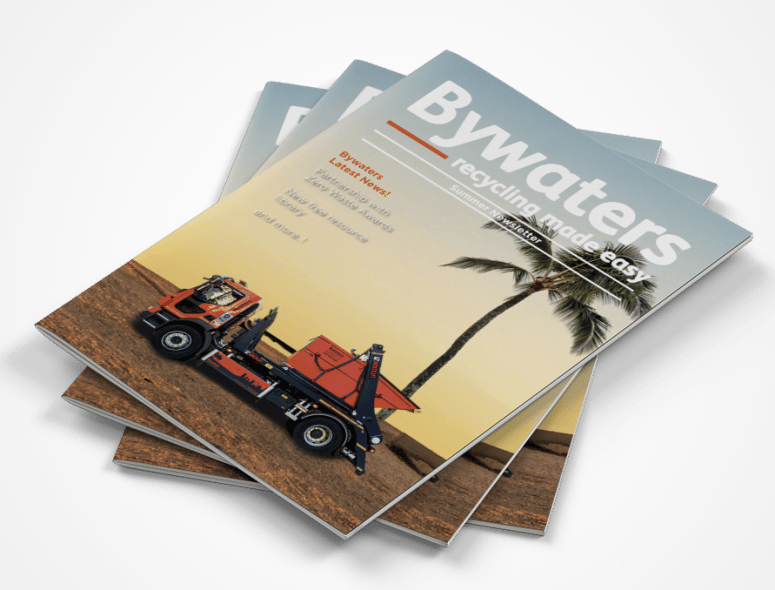Contact us today for your Free Quote
Waste that cannot be recycled is classified as general waste, it is the most prevalent waste stream generated by homes and businesses, but have you ever wondered what happens to it once it’s thrown in the bin?
The problem with general waste
Around the world, waste is a big issue. If not handled properly, it can have huge environmental impacts, causing severe problems for the future of our planet. The waste we dispose of has been seen in the Mariana Trench, the deepest part of the world, and at the top of the world on Mount Everest.
So what’s the problem with general waste? Unfortunately, in most cases, general waste is sent to landfill, a burial site for our rubbish that cannot be recycled. Here, general waste decays for up to 5 centuries and becomes a major source of pollution, producing three main problems; toxins, leachate and greenhouse gases.
Typically, waste toxins are present in waste products, and leachate is liquid formed by water filtering through our landfill waste. Both sources of pollution cause the destruction of our earth and groundwater and can pollute soil for years, leaving it inhabitable for biodiversity.
Greenhouse gas emissions have disastrous environmental effects and health consequences. They contribute to respiratory problems, due to smog and air pollution, and play a key role in climate change by trapping heat in our atmosphere, leading to more frequent weather hazards and the eventual extinction of animals. Multiple scientific studies have suggested that by the end of the 22nd century, almost half of all the world’s species will disappear from planet Earth, creating one of the most significant ecological disasters known to mankind. For example, rising temperatures force bee populations northward to remain in cool climates, meaning spring flowers bloom much earlier than usual, thus leaving less time for bees to pollinate.
The Bywaters Way
At Bywaters, we aim to lead the UK to a more sustainable future. It is within our ethos to send zero waste to landfill, and to minimise carbon emissions through our ‘London for London’ initiative, keeping London’s air fresh.
We send all the general waste we receive for recovery, through energy from waste (EfW). Through this process, waste is incinerated, and the resulting heat is used to provide energy to households in the UK. In 2019, before the pandemic, we diverted 84,622 tonnes from landfill to EfW plants to power 18,052 homes.
To recover general waste in the most sustainable way, we collect it using our fleet of Euro 6 trucks and electric vehicles, fully compliant with London’s Ultra Low Emissions Zone (ULEZ). The general waste is then sorted and bulked at our material recovery facility (MRF), powered by 4,000 solar panels. Once bulked, we transport general waste via barge, to Cory’s energy from waste (EfW) plants in Kent, reducing even more emissions. This significantly cuts our wheeled vehicle movements by approximately 11,000 miles a year.
Once the general waste hits land, it is then tipped into a pit, where grab cranes deposit it into hoppers that are fed into the three combustion lines. Using extremely efficient moving grate combustion technology, the waste is incinerated at temperatures more than 850C, about the same temperature as lava in a volcano.
Energy
The heat from the incineration process transforms water in specialist boilers into steam, thereby spinning turbines to create energy. This energy is used by the facility and fed into the National Grid, supplying power to homes and businesses around the country. To boost the plant’s efficiency and create even more energy, the steam is converted back into water and re-circulated through a succession of air-cooled condensers.
Aggregate
Ash generated by the incineration process is known as Incineration Bottom Ash (IBA), and it accounts for around 25% of the facility’s waste output. The ash is processed through a quench bath and discharge vessel, separating large metal pieces from the IBA. The IBA is then loaded into hoppers, filling container boxes, that are then sent to reprocessors to be turned into aggregate.
Gas
Flue gas from the incineration process goes through an extensive cleaning process to minimise its environmental impact. Nitrogen oxides are reduced to nitrogen and water vapour by injecting aqueous ammonia into the incineration furnace. Hydrated lime is fed into the scrubber reactor vessel to neutralise the acidic gases, and powdered activated carbon is injected to absorb heavy metals and dioxin/furans. Finally, particulate matter is removed from the flue gas, by filtering it through a succession of cloth filter bags.
After the EfW process is complete, the overall mass of the residual waste may be reduced by up to 85 per cent, compared to a landfill which grows over time. Another big advantage of utilising EfW instead of landfills is that leachate will not be produced, meaning less harm to our planet. Also, calculations suggest that allowing general waste to decompose in landfills contributes around 30% more to global warming than burning the same amount in an Efw facility—far from zero emissions, but a step in the right direction.


